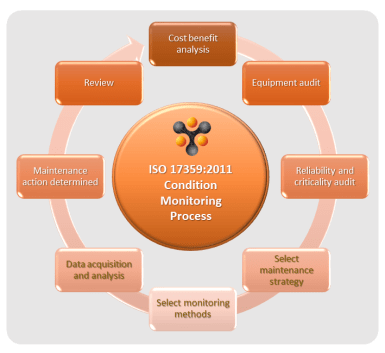![]() By using various process parameters (e.g. pressure, temperature, vibration, flow) and material samples (e.g. oil and air); equipment health, performance, integrity and strength can be monitored to schedule corrective action and minimise unplanned, and often costly, downtime.
By using various process parameters (e.g. pressure, temperature, vibration, flow) and material samples (e.g. oil and air); equipment health, performance, integrity and strength can be monitored to schedule corrective action and minimise unplanned, and often costly, downtime.
Condition monitoring, in combination with a properly formed condition based maintenance strategy can significantly reduce downtime and maintenance costs and utilise maintenance resources for more preventative or minor corrective maintenance tasks rather than emergency repairs when fixing failures.
The capability to predict failures or have early indications of failures of equipment gives your business the ability to plan minor corrective maintenance in when its impact on production is minimal and avoid costly emergency repairs or replacement of systems, it can even reduce your reliance on redundancy in your systems and/or reduce spares stockholding (especially of capital components).
CBM is often best used in conjunction with maintenance development processes such as Failure Defence Planning (FDP).
With our strategic partners, we can provide a full CBM assessment and implementation service including providing CBM equipment, installation, implementation strategies, training and technical support.
Typical Tribe Engineering CBM project lifecycle:
- Identification of your critical assets by conducting a site survey and equipment audit. Our engineers will discuss your maintenance requirements, identify your critical assets and suggest where to target maintenance resources where they will be most effective.
- A CBM maintenance strategy is created and agreed including the CBM technologies that will be utilised.
- Condition monitoring equipment is set up and a central and local database is generated. Identified members of your team will be trained in the use of the equipment and data.
- Initial set-up of critical levels to customer requirements and define KPI’s.
- Ongoing monitoring and review.










